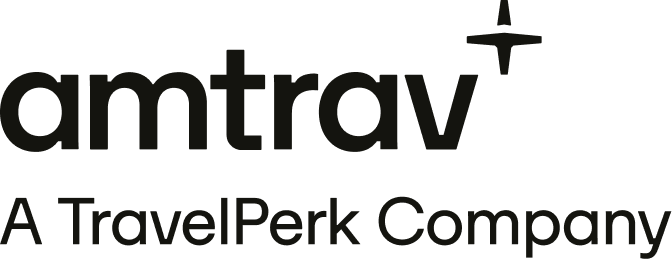We know what NDC-ready means, we know the benefits of NDC, and we know that not being NDC-ready costs travel programs hundreds of thousands of dollars because their TMC and OBT are missing nearly 40% of American Airlines’ lowest fares.
But what is NDC and being NDC-ready going to cost travel managers?
Spoiler: it’s up to travel managers. Travel managers have control over this cost – if they’re willing to take that control. Although some airlines, OBTs and TMCs will use NDC to directly or indirectly try to charge companies more, travel managers can manage those costs with effective travel policies or, in some cases, switching to more NDC-ready providers.
Let’s take a look at the costs and revenues for the three big players who need to be NDC-ready:
- the airlines that are developing and deploying NDC technology,
- the providers who need to upgrade their technology and processes to be NDC-ready,
- and the travel managers responsible for corporate travel programs and travelers.
Airlines are building and deploying New Distribution Capability (NDC) to make more money: more revenue from additional upgrade, seat and ancillary sales, more revenue (from customers or from competitors) from new ticket pricing capabilities, reduced cost from lower distribution fees to providers like global distribution systems (GDSs) and travel management companies (TMCs). Building and deploying NDC isn’t free, airlines expect to cover those development costs with these savings and new revenue.
Providers like GDSs, TMCs and online booking tools (OBTs), as discussed in the NDC-ready blog, have a lot of work to do to be NDC-ready. All three need to upgrade their software to be NDC-ready and upgrade to NDC-capable connections. These upgrades aren’t easy or cheap – as evidenced by how few providers have completed these updates. In addition to this up-front cost, if providers (particularly TMCs) find that the new technical connections and NDC capabilities are less efficient because they require more agent intervention, this drives ongoing cost. And GDSs and TMCs may face reduced fees and commissions from airlines as part of those airlines’ broader distribution strategies.
(A note on this inefficiency and NDC. One promise of NDC is that many transactions like applying unused tickets and making trip changes will become easy, a simple button push instead of a complex exchange that takes a highly-skilled travel agent several minutes to complete. This promise will be realized and this ongoing cost will go away.)
Are there revenue opportunities for these providers? Maybe. At a basic level, these providers must deliver the full selection of flights and fares to customers – it’s a foundational part of their value to customers, so they have to make these investments to deliver that value (TMCs and OBTs that are not NDC-ready are not delivering this value). Second, there may be new commission opportunities from airlines on upsells and ancillary sales that weren’t available before.
Now, honestly, if the revenue opportunities exceeded the cost of becoming NDC-ready, then more of these providers might be ready by now — but they’re not ready, and indeed, the cost probably exceeds the new revenue for many. Which is why OBTs and TMCs will likely attempt to charge customers fees and surcharges to raise revenue and cover their costs, like those that we’ve seen for supporting new technical connections (Travelfusion) and supporting certain airlines (Southwest).
Which brings us to the travel manager, representing the company and its travelers, facing down new costs from airlines and providers.
With airlines’ new NDC capabilities, travel managers have a clear choice. Do travel managers allow travelers to purchase new ancillary products within the travel program and within travel policy? It’s up to the travel manager: some travel managers will allow these new products within policy in hopes of increasing traveler satisfaction and capturing more spend (possibly negotiating discounted rates for these products with airlines), others will prioritize cost control and not allow these products. New ticket pricing capabilities will likely lead to no increase or slight decreases in ticket prices.
When OBT and TMC providers raise prices or surcharge to cover the cost of being NDC-ready, travel managers again have a choice – if they take it. There are three choices: accept the cost, attempt to avoid the cost, or seriously consider switching to competing providers. The first option is pretty simple: accept the additional costs from the OBT and TMC in exchange for access to the flights and fares that the program needs. The second, avoiding additional cost by opting-out of NDC content with the OBT and TMC, means leaving large holes in the selection of flights and fares that travelers will notice (and will go away as NDC steadily replaces old technology).
The third option calls on the travel manager’s procurement skills, sourcing for both quality and cost-effectiveness. First the travel manager needs to point out to company stakeholders that the cost of higher fees from the OBT and TMC justifies a provider search and possible switch to avoid these fees – and hey, maybe a new provider comes with additional benefits like higher online adoption, better unused ticket savings and better service too. Second, the travel manager needs to check out the market, considering providers who have been NDC-ready for a while – Navan, Spotnana, Amtrav, plus OBTs like Cytric and GetThere – and providers who’ve recently become NDC-ready. Then it’s time to source, selecting a new provider or putting out an RFP that helps the company find providers who help the company achieve its priorities – including being NDC-ready at no additional cost. Of course your existing TMC and OBT may take this opportunity to walk back their NDC fees and surcharges to keep your business, but showing that you’re open to leaving is the only way to achieve that.
Where does the sourcing process lead? Let’s be honest: nobody knows. But we do know that lower costs and better service are rarely achieved in B2B enterprise transactions without the credible threat of switching providers. Which is how, between existing travel policy control and using their sourcing powers, travel managers will determine how much NDC ends up costing their travel program.
P.S. Have you reached the end of this blog and you’re thinking: “This blog is bologna, every customer including me is going to pay more because of NDC!” Let us humbly assure you that it can be done. Thousands of customers are NDC-ready and pay no extra fees or surcharges to access flights and fares via NDC with an NDC-ready provider today. That provider is AmTrav.

Elliott McNamee





